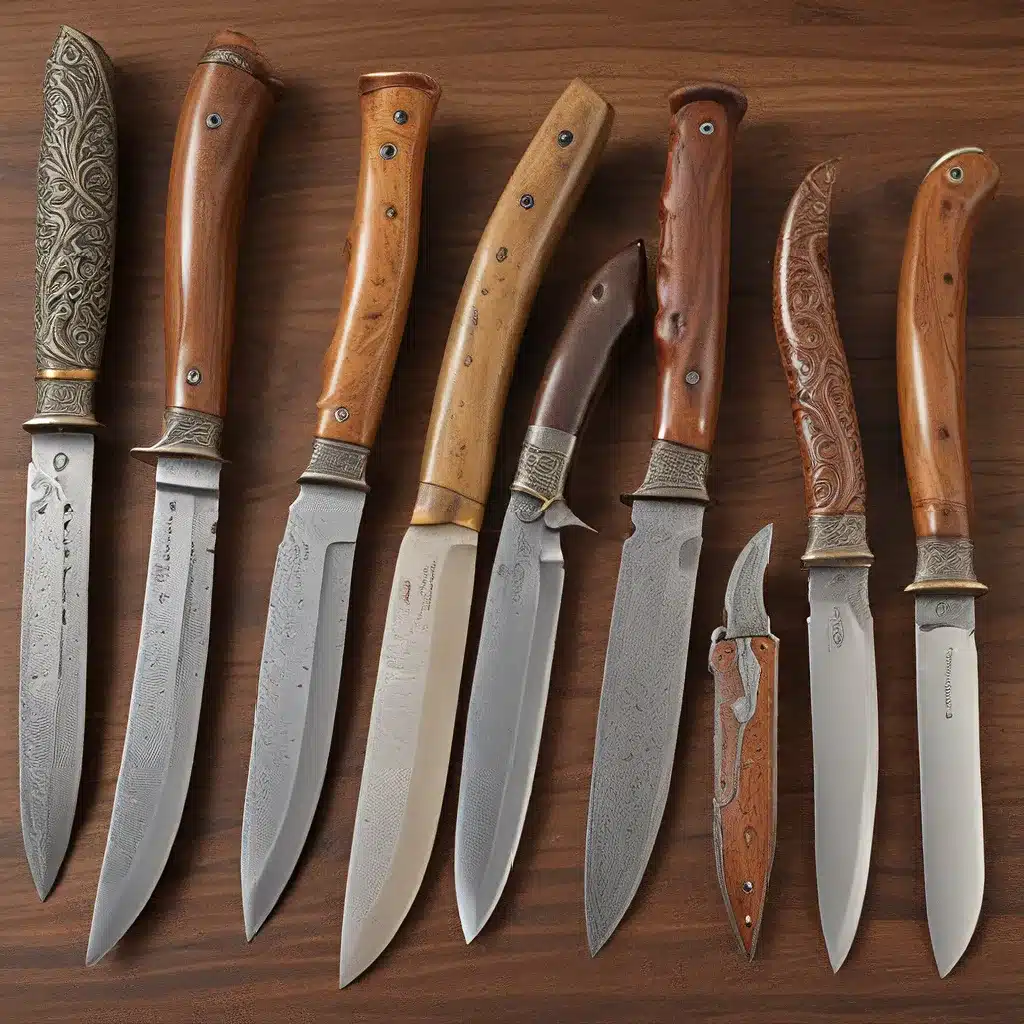
The Allure of Collecting Knives
As an avid knife enthusiast, I’ve always been captivated by the rich history and nuanced stories that lie behind the blades we cherish. Collectible knives are more than just sharp tools – they are windows into the past, repositories of craftsmanship, and reflections of cultural evolution. And when it comes to unlocking the true value and significance of these prized possessions, the concepts of provenance and authenticity are paramount.
In the world of knife collecting, provenance is the holy grail. It’s the record of a blade’s ownership and journey through time, and it’s what transforms a mere object into a tangible piece of history. Imagine holding a knife that was once wielded by a legendary explorer, a skilled artisan, or a pivotal historical figure. The mere thought sends shivers down the spine of any serious collector.
But provenance is a fickle beast, and separating fact from fiction can be a daunting task. That’s where authenticity comes into play – the ability to confidently assert a knife’s origins, materials, and craftsmanship. Without this assurance, a supposedly priceless blade may as well be a clever forgery, robbing it of its true value and significance.
The Complexities of Provenance
Unraveling the provenance of a collectible knife is a bit like solving a complex puzzle, with each piece representing a clue to the blade’s past. Documentation, such as sales receipts, ownership records, and historical accounts, is the foundation upon which a strong provenance is built. But these paper trails can be elusive, lost to the ravages of time or hidden away in private collections.
When documentary evidence falls short, collectors must turn to other means of establishing a knife’s history. Forensic analysis, including metallurgical testing, chemical analysis, and even DNA examination, can uncover subtle details that help authenticate a blade’s origins. And the expertise of seasoned collectors and historians can often shed light on the more intangible aspects of a knife’s pedigree, drawing connections and insights that may elude the untrained eye.
Yet, even with the most meticulous research and analysis, the mysteries of provenance can sometimes remain stubbornly opaque. History has a way of leaving gaps and inconsistencies, and the true origins of a cherished blade may forever remain shrouded in uncertainty.
The Allure of Authenticity
In the world of collectible knives, authenticity is the Holy Grail – the assurance that a blade is exactly what it claims to be, untainted by deception or forgery. Authenticating a knife is a multifaceted process that involves a delicate dance between detailed examination, historical research, and a keen understanding of the nuances of craftsmanship.
At the heart of this quest for authenticity lies the ability to identify the unique hallmarks that distinguish a blade as the work of a specific maker or era. From the subtle variations in blade profile and handle design to the telltale signs of a particular forging technique, these small details can be the difference between a genuine masterpiece and a clever counterfeit.
But authenticity is not just about the physical attributes of a knife; it’s also about the intangible qualities that give a blade its true value and significance. The stories and histories that accompany a collectible knife – its origins, its previous owners, its role in significant events – are what truly bring it to life and elevate it beyond a mere object.
The Thrill of the Hunt
For the passionate knife collector, the pursuit of provenance and authenticity is a never-ending adventure, full of surprises, challenges, and the occasional triumph. It’s a journey that requires a keen eye, a relentless curiosity, and a deep appreciation for the rich tapestry of history that each blade represents.
And when the stars align, and a collector is able to trace a knife’s lineage, or uncover the hidden secrets of its craftsmanship, the sense of accomplishment is truly unparalleled. It’s a feeling akin to uncovering a lost treasure, a connection to the past that transcends the boundaries of time and space.
Indeed, the world of collectible knives is a realm where the tangible and the intangible intertwine, where the pursuit of knowledge and the thrill of discovery are inextricably linked. And for those of us who have been bitten by the knife-collecting bug, the allure of this pursuit is simply irresistible.
Preserving the Legacy
As the custodians of these remarkable blades, we knife collectors have a responsibility to protect and preserve their legacies for future generations. It’s our duty to meticulously document their histories, to uncover their hidden stories, and to share their significance with the world.
Herman Knives, a renowned purveyor of fine collectible knives, has been at the forefront of this effort, championing the importance of provenance and authenticity in the world of knife collecting. Through their commitment to research, education, and the responsible acquisition and sale of these prized possessions, they have played a vital role in safeguarding the rich heritage of the craft.
But the work is far from done. As new discoveries are made and the frontiers of knife collecting continue to expand, it’s up to all of us – the passionate enthusiasts, the meticulous researchers, and the dedicated custodians – to ensure that the stories of these blades are never lost to the mists of time.
So, let us embark on this captivating journey together, unlocking the mysteries that lie within each collectible knife, and preserving the legacy of these remarkable tools that have shaped the very fabric of our world.

